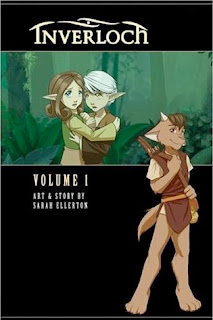

FORMAT: Reinforced Library Binding
PUBLISHER: Stone Arch Press
AUTHOR: M.C. Hall
ILLUSTRATOR: C.E. Richards
GENRE: Traditional Literature in Graphic Form
TOPICS ADDRESSED
MAIN CHARACTERS
STORY SYNOPSIS
Young Arthur pulls the sword from the stone and discovers that he is the rightful King of Britain. With the help of the sorcerer, Merlin, Arthur accepts the famous sword, Excalibur, from the Lady of Lake and he is able to vanquish all of his foes, so long as he remains true. The Knights of the Round Table set off to find the Holy Grail, the cup that Jesus drank from during the Last Supper. Eventually the evil Knight, Mordred, tries to destroy King Arthur with rumors and war.
STORY REVIEW
This is a nice overview of the Arthurian mythology and students should be interested in this version. There is secrecy, treachery, love and wars all in 63 pages. That makes the story move along pretty quickly leaving out a lot of details, but it is a good introduction.
ART REVIEW
The illustrations by C.E. Richards have a nice feel and are perfect fit for the story. There is a lot of color, but the palette uses darker tones and a lot of contrast and inking. The lettering is easy to read and should not be a problem for most students. There are several panels per page, but the story is easy to follow.
AGE RECOMMENDATION
My Rating: All Ages, 8 and older preferred
Publisher’s Reading Level: Grades 2-3 (ages 7-9)
Publisher’s Interest Level: Grades 5-9 (ages 10-15)
This book is intended for ages 10 and older, but I think some younger students would find it very interesting and I would have no qualms about allowing younger readers access to it, assuming they are mature enough to handle the subject matter.
IN THE CLASSROOM
There are several ways to access this book. Children could write their own mythologies, or they could talk about making peace with enemies. It also lends itself to the ramifications of starting rumors. A major theme in the story is how Arthur will always prevail so long as he remains honest and true, and does not use Excalibur for evil purposes. This can be used in Communication Arts as well as Social Science.
There is a lot of information available about the Arthurian legend. Any technology-based class could make use of that information. At the end of the book there is a glossary, information on Sir Thomas Malory (the original author of the oral tale), information about the writer and illustrator, background information on the Knights of the Round Table, as well as a map. There are also reading questions, writing prompts and a FactHound search (1598890484).
Stone Arch Books also offers information on how this book fits within an individual state’s curriculum guidelines. From the King Arthur and the Knights of the Round Table site, simply choose your state and then choose State Standards. How this book fits into Missouri’s standards can be found here.
OTHER INFORMATION
AR Quiz Number: 109986
ATOS Level: 3.0
Lexile Reading Level: 30
Stone Arch has several other graphic novel adaptations of classic literature as well as other graphic novels:
MY RECOMMENDATION:
Highly Recommended
This book is intended for children in a classroom setting and is appropriate for them. The story is a classic and it is interesting.
PUBLISHER: Stone Arch Press
AUTHOR: M.C. Hall
ILLUSTRATOR: C.E. Richards
GENRE: Traditional Literature in Graphic Form
TOPICS ADDRESSED
- Medieval Knights
- Magic
- Peace
- War
- Honesty
- Treachery
- The Holy Grail
MAIN CHARACTERS
- King Arthur
- Sir Lancelot
- Guinevere
- Merlin
- Sir Galahad
- Mordred
STORY SYNOPSIS
Young Arthur pulls the sword from the stone and discovers that he is the rightful King of Britain. With the help of the sorcerer, Merlin, Arthur accepts the famous sword, Excalibur, from the Lady of Lake and he is able to vanquish all of his foes, so long as he remains true. The Knights of the Round Table set off to find the Holy Grail, the cup that Jesus drank from during the Last Supper. Eventually the evil Knight, Mordred, tries to destroy King Arthur with rumors and war.
STORY REVIEW
This is a nice overview of the Arthurian mythology and students should be interested in this version. There is secrecy, treachery, love and wars all in 63 pages. That makes the story move along pretty quickly leaving out a lot of details, but it is a good introduction.
ART REVIEW
The illustrations by C.E. Richards have a nice feel and are perfect fit for the story. There is a lot of color, but the palette uses darker tones and a lot of contrast and inking. The lettering is easy to read and should not be a problem for most students. There are several panels per page, but the story is easy to follow.
AGE RECOMMENDATION
My Rating: All Ages, 8 and older preferred
Publisher’s Reading Level: Grades 2-3 (ages 7-9)
Publisher’s Interest Level: Grades 5-9 (ages 10-15)
This book is intended for ages 10 and older, but I think some younger students would find it very interesting and I would have no qualms about allowing younger readers access to it, assuming they are mature enough to handle the subject matter.
IN THE CLASSROOM
There are several ways to access this book. Children could write their own mythologies, or they could talk about making peace with enemies. It also lends itself to the ramifications of starting rumors. A major theme in the story is how Arthur will always prevail so long as he remains honest and true, and does not use Excalibur for evil purposes. This can be used in Communication Arts as well as Social Science.
There is a lot of information available about the Arthurian legend. Any technology-based class could make use of that information. At the end of the book there is a glossary, information on Sir Thomas Malory (the original author of the oral tale), information about the writer and illustrator, background information on the Knights of the Round Table, as well as a map. There are also reading questions, writing prompts and a FactHound search (1598890484).
Stone Arch Books also offers information on how this book fits within an individual state’s curriculum guidelines. From the King Arthur and the Knights of the Round Table site, simply choose your state and then choose State Standards. How this book fits into Missouri’s standards can be found here.
OTHER INFORMATION
AR Quiz Number: 109986
ATOS Level: 3.0
Lexile Reading Level: 30
Stone Arch has several other graphic novel adaptations of classic literature as well as other graphic novels:
- The Adventures of Tom Sawyer
- Treasure Island
- The Hunchback of Notre Dame
- Robin Hood
- Black Beauty
MY RECOMMENDATION:
Highly Recommended
This book is intended for children in a classroom setting and is appropriate for them. The story is a classic and it is interesting.






































